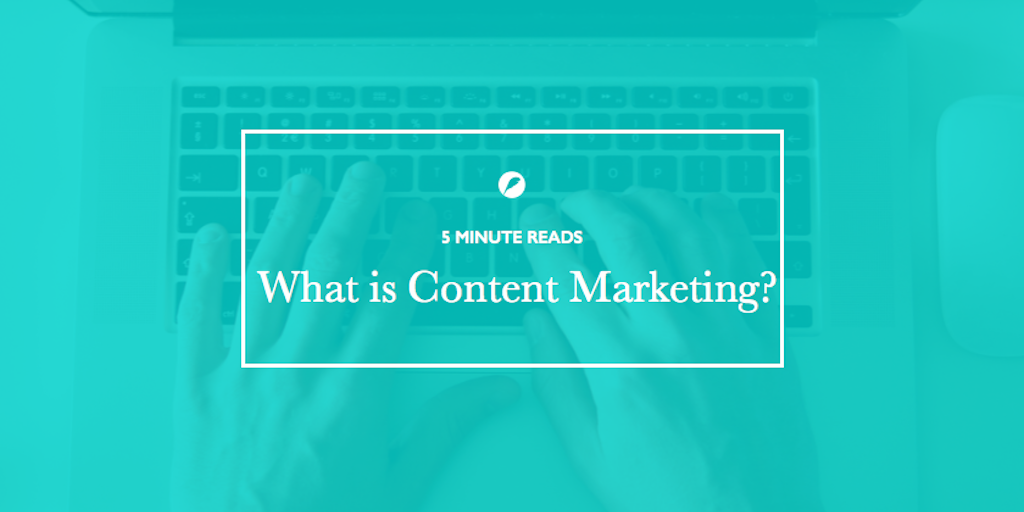
What Is Content Marketing? Everything You Need to Know in 5 Minutes
Content marketing is one of the most effective and fastest growing forms of marketing today, yet many remain unclear as to how it works.
This new kind of marketing is known by a variety of names, but not all of these titles are synonymous. While terms like “branded content,” corporate storytelling,” “custom publishing,” “custom content” and “native advertising” are commonly used interchangeably with content marketing, it’s important to understand the distinction.
These titles are all forms of content marketing, which is an umbrella term used to describe marketing materials that provide valuable, relevant and consistent content to attract and acquire a clearly defined audience. This could take the form of written content, infographics, web pages, podcasts, videos, books or other forms of published media, so long as a brand has a hand in producing the content.
While there’s a lot to be said about content creation and advertising, here’s everything you need to know about content marketing in five minutes.
Distinction from Traditional Marketing
The primary distinction between content marketing and traditional advertising is that content marketing seeks to provide its audience with useful and relevant information. It’s often similar to the non-marketing content that a publisher provides, except that it aims to drive consumer action.
For example, a banner ad on a media publisher’s website is a clear advertisement that exists to draw consumer attention away from the page’s content and toward the brand’s message. Content marketing, on the other hand, may come in the form of an infographic, corporate blog post, video or article. It provides the reader with value similar to a publisher’s typical content while simultaneously promoting a brand or product.
The ultimate goal of content marketing is to provide audiences with valuable content that cleverly incorporates a brand, rather than draws attention away from it.
A Brief History
Content marketing has existed for hundreds of years. In fact, a cave painting from 4200 B.C. listed “6 ways a spear can save you from a wild boar,” and is considered one of the first example of content marketing. Of course, recent developments in technology have amplified this ancient marketing technique. Around the turn of the century, during the period of industrialization, major brands began experimenting with new forms of content marketing. For example, John Deere launched a magazine called “The Furrow” in 1895, and in 1904, Jell-O distributed a free recipe book. In 1982, toymaker Hasbro teamed up with Marvel to create G.I. Joe, a comic built to promote the sale of action figures.
Modern Content Marketing
While these early content marketing efforts were typically pursued by the largest and wealthiest consumer product manufacturers of their time, content marketing is used by brands of all shapes and sizes today.
According to the Content Marketing Institute, 88% of B2B and 76% of B2C marketers currently use content marketing as part of their strategy. It also found that 76% of B2B and 77% of B2C marketers hope to produce more content in 2016 than they did last year.
This new form of marketing isn’t just an experiment anymore. It’s a proven model for lead generation. A 2015 survey of 5,000 business owners by Salesforce found that 51% of respondents believe content marketing is “important” or “very important” to creating a cohesive customer journey, and a 2016 survey of over 1000 marketers by Curata found that 74.2% believe content marketing has resulted in increased quality and quantity leads.
Modern brands and content marketers have many more tools at their disposal than cave drawings or comic books. The Internet has enabled a wide variety of well-established media publishers and content producers to create and publish branded content. Today, advertisers can reach out to everyone from The New York Times to local food bloggers to find opportunities to reach their audience through useful and valuable content. Pressboard’s Story Marketplace is a great way to find and work with hundreds of the world’s greatest media publishers.
Advantages

Transparency is key for sponsored content, which is why Pressboard includes a branded header and footer on all articles.
In the age of ad blockers and widespread digital ad fraud, content marketing and sponsored content remain some of the most effective ways of reaching and engaging with a highly targeted audience. Since the brand message comes in the form of content that is largely indistinguishable from that publisher’s typical content, ad blockers cannot block it, and it does not fall victim to common ad fraud issues like viewability. This being said, it’s important that sponsored content is clearly advertised as such in order to create trust between a brand and a reader. Here’s how we identify sponsored posts at Pressboard. The audience will still be more likely to see and engage with it than a traditional banner it, and if it’s valuable and interesting, it can even give traditional editorial a run for its money.
With the rise of ad blocking and digital ad fraud, coupled with new technology tools and deeper content analytics, content marketing has emerged as a primary marketing tactic that benefits both the publisher and the brand. It has never been cheaper, easier or more advantageous to pursue a content marketing strategy, and advertisers of all shapes and sizes are jumping on the bandwagon.
As part of our Ask the Experts series, we’re learning from the world’s leaders in influencer marketing and sharing their advice. In this..
Get your Content Marketing Fix
Sign up to receive tips on storytelling and much more.
We promise to respect your inbox.



